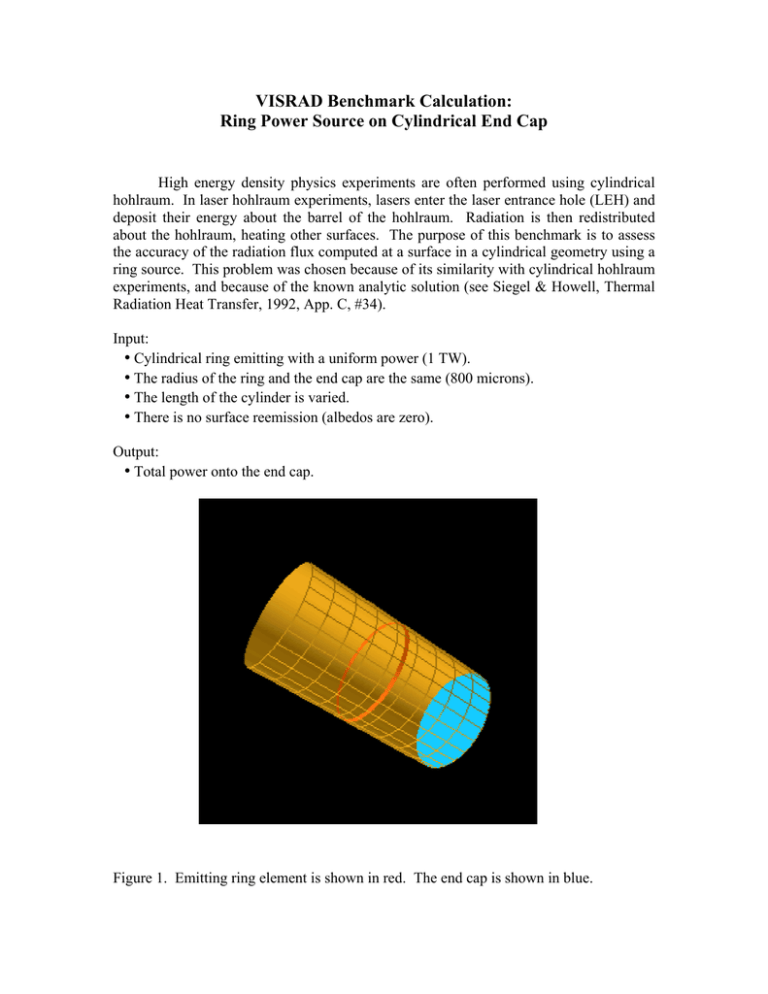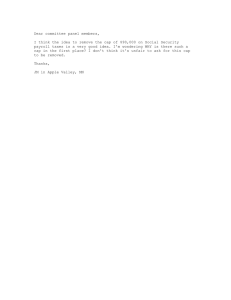VISRAD Benchmark Calculation: Ring Power Source on Cylindrical
advertisement

VISRAD Benchmark Calculation: Ring Power Source on Cylindrical End Cap High energy density physics experiments are often performed using cylindrical hohlraum. In laser hohlraum experiments, lasers enter the laser entrance hole (LEH) and deposit their energy about the barrel of the hohlraum. Radiation is then redistributed about the hohlraum, heating other surfaces. The purpose of this benchmark is to assess the accuracy of the radiation flux computed at a surface in a cylindrical geometry using a ring source. This problem was chosen because of its similarity with cylindrical hohlraum experiments, and because of the known analytic solution (see Siegel & Howell, Thermal Radiation Heat Transfer, 1992, App. C, #34). Input: • Cylindrical ring emitting with a uniform power (1 TW). • The radius of the ring and the end cap are the same (800 microns). • The length of the cylinder is varied. • There is no surface reemission (albedos are zero). Output: • Total power onto the end cap. Figure 1. Emitting ring element is shown in red. The end cap is shown in blue. Figure 2 shows the calculated radiative power incident on the end cap as a function of axial distance from the ring source to the end cap. The VISRAD results (shown as red squares) are seen to agree very well with analytic solution (solid curve). The differences between the calculated and exact powers, which likely arise due to finite number of surface elements used in the calculation, are ~ 0.1 – 0.4%. (About 600 surface elements were used.) Figure 2. Comparison of calculated radiative power incident on the end cap of the cylinder vs. distance between the ring source and end cap.

